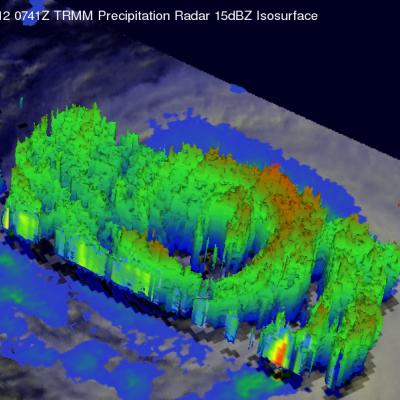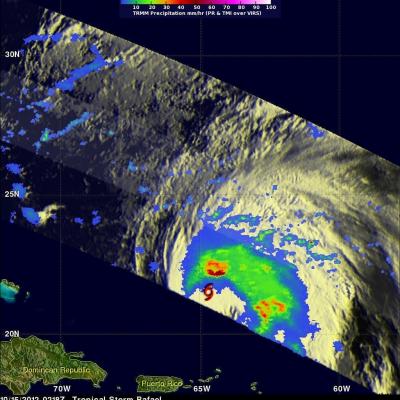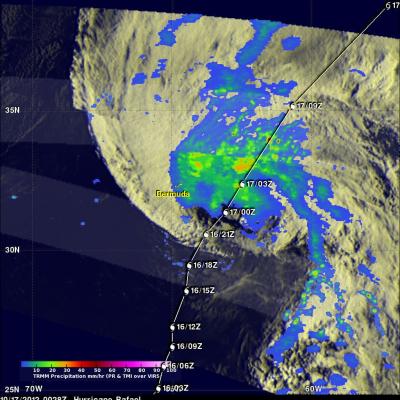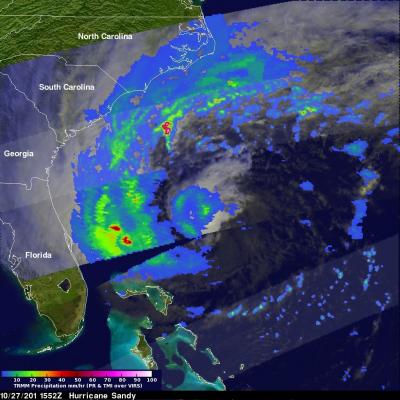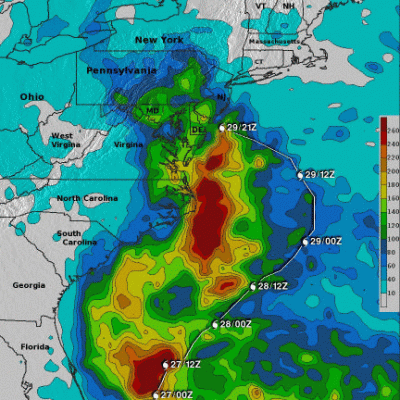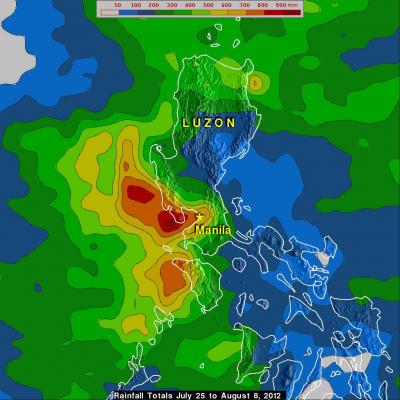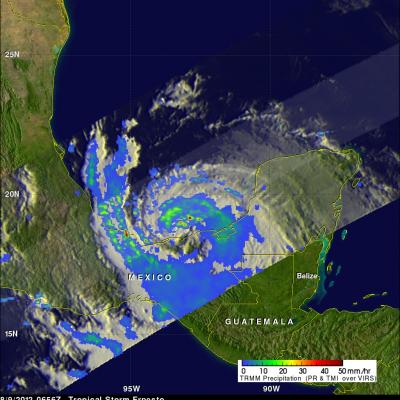Tropical Cyclones In Three Oceans
The TRMM satellite saw tropical cyclones in three ocean basins today. TRMM flew nearly above tropical storm Patty in the Atlantic Ocean northwest of the Bahamas first on October 12, 2012 at 0326 UTC. It was night so an enhanced infrared image from TRMM's Visible and InfraRed Scanner (VIRS) was overlaid with a rainfall analysis derived from TRMM's Microwave Imager (TMI) and Precipitation Radar (PR) instruments. Patty's location, close to the edge of the TMI swath, is shown with a red tropical storm symbol. TRMM also viewed a developing tropical cyclone in the South-West Indian Ocean on October


